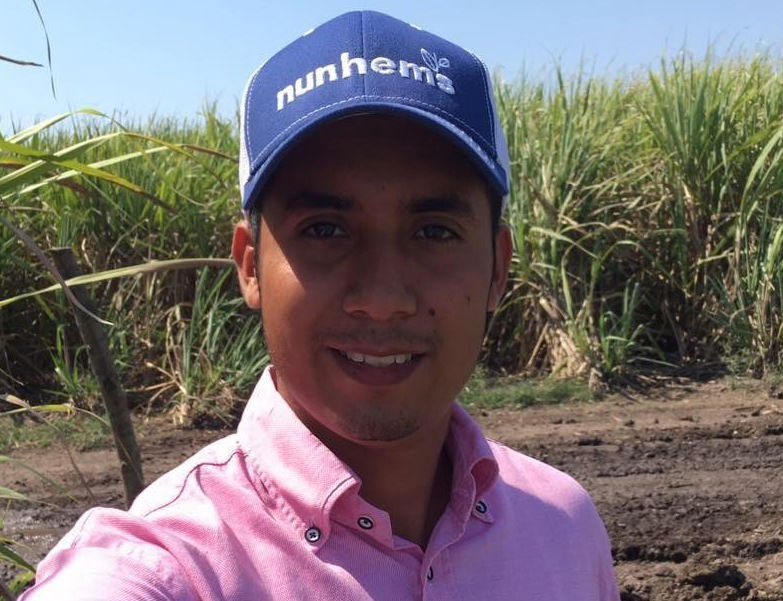Rafael Casas del Ángel

Sugarcane (Saccharum spp.) is one of the major agricultural crops in Mexico due to its high biomass production and sucrose content. Between 2012 and 2018, the national average sugarcane yield was about 70 t ha-1, while in Tamaulipas state the sugarcane yield was 66 t ha-1, which is lower than the national average yield. Growing only CP 72-2086 sugarcane cultivar across Mexico is risky because of newer and more devastating pests and diseases. The aim of this study was to assess conventional and high-tech (fertigation) mineral fertilisation across 40 sugarcane genotypes under two different environmental conditions in the south of Tamaulipas, Mexico.
This research was carried out in El Mante (location 1) and Altamira (location 2) both located in the south of Tamaulipas state, Mexico. While the collection of sugarcane genotypes was combined by hybrids, promising, semi-commercial and commercial cultivars, which come from different germplasm banks. Where sugarcane hybrids were obtained from Sugarcane Research and Development Centre (Centro de Investigación y Desarrollo de la Caña de Azúcar “CIDCA”) and assessed for their growth potential at INIFAP-Colima and Las Huastecas-INIFAP. While the promising semi-commercial and commercial sugarcane cultivars were achieved from Sugarcane Research Centres such as INIFAP-Colima, El Estribo, Azucar Grupo Sáenz Ingenio El Mante. Most of the semi-commercial and commercial sugarcane cultivars have been assessed for their growth potential at different selection stages.
As the main finding, there are hybrid, promising and semi-commercial sugarcane cultivars with growth potential as the CP 72-2086 cultivar. These high potential sugarcane cultivars could partially substitute the predominant CP 72-2086 sugarcane cultivar. Another finding is that the yield components were significantly different between sugarcane cultivars, locations and its interaction. There was a correlation between yield components and the calculated yield. Although environmental conditions were different between locations, the average values of yield components across the 40 sugarcane cultivars were associated between locations. It means that sugarcane cultivars with either low or high growth potential were the same in both locations. The estimated yield was clustered in four groups, where group 1 and 2 could be considered high potential genotypes for further investigations. However, to assess the profitability of sugarcane in the long term, the assessment of yield components, sucrose content and yield should be done in first and second ratoons.
Key words: sugar cane, fertigation, furrow irrigation, macro/micronutrients.
